First of all, what is a fish? Fish versus mammal – I sometimes have trouble with that. I know that mammals are warm blooded, humans and most of the animals we encounter are mammals, so mammals are better, right? But some fish have such a sentient presence, that the warm blooded aspect has little meaning. Arguably the most intelligent fish, the one with the biggest brain, and in my opinion certainly the most elegant, is the giant manta ray, aka Mobula birostris, aka giant oceanic manta ray. 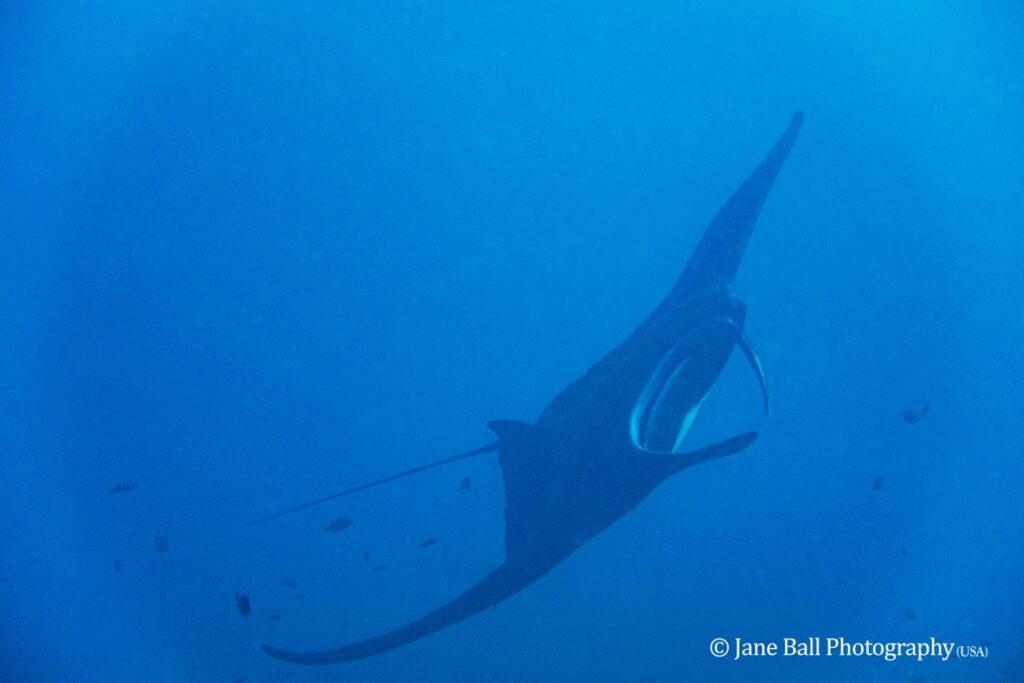
Giant manta rays are the biggest of the rays. Their wing span can be up to 26 feet, their weight over 5,000 pounds, and their life span up to 50 years. They are found all over the world. The first one I saw was in 1993 when I went to Cocos Island for the first time. Cocos Island is part of Costa Rica, and is 342 miles to the southwest of the mainland, about a 36-hour transit by dive boat. I was young and immortal then and fearless about diving deep. On one of our dives, I saw a giant manta ray for the first time and was mesmerized. I swam down with my (then film) camera to within inches of it and kept up as best I could for a few seconds. Whether it was because it was my first encounter or maybe because I was a little narced at over 100 feet deep or maybe it has just gotten bigger in my memory over time, I remember the manta as really big. To this day, I believe it was the biggest one I have ever seen. Realistically, I believe it had a wing span of about 15 feet. Here are photos of it, and they remain my favorites. Note the remora on the top. This is the only one I have seen that had a remora on top, although I have seen several with them on the underside. At the end of the dive, my buddy said that I was so close that she thought I was going to ride the manta. That had never occurred to me, and I would never do that. But I have heard stories of people grabbing onto the remora and using it as a handle. I don’t know if that actually works.
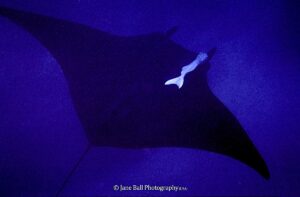
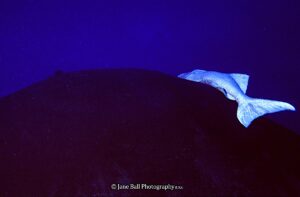
Since then, I have seen mantas in various places around the world. I looked through my photo collection to find all my manta photos, and the best ones are from the Revillagigedo Islands. These are islands off the western coast of Mexico, south of Baja. You leave from Cabo San Lucas and travel overnight on the dive boat until you reach these islands. The water was cold and full of humpbacks and mantas. I have added a couple photos to my portfolio here and here.
Mantas are very athletic and incredibly graceful. Off the Big Island in Hawaii, the dive shops have set up an auditorium of sorts for night dives where they station large floodlights underwater which attract plankton and other small critters that the mantas eat. Divers are placed in a big circle around the lights and the mantas swoop in doing multiple barrel rolls over the floodlights to scoop up the free meal. Mantas are filter feeders. They open their huge mouths and scoop in the feast, unfolding their cephalic lobes to expand their scooping area.
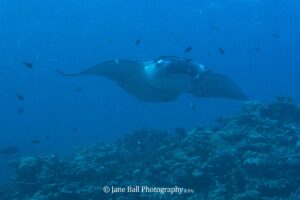
In some places, mantas are very curious and will invite or at least tolerate close encounters. In other places, we strange, bubble-blowing creatures must keep our distance or else the mantas will leave. I have seen the latter situation at various cleaning stations around the world. Mantas rely on cleaner fish to keep them tidy, and you can often find them hovering over coral heads where the cleaners live (aka cleaning stations). 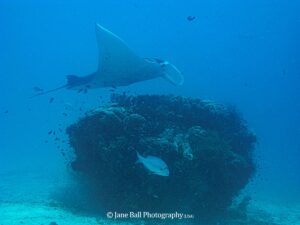 We encountered many mantas at cleaning stations in Fiji in 2024. One of the mantas had a very short tail and was missing a bite-size chunk out of its wing. Likely it tangled with a shark when it was younger and smaller.
We encountered many mantas at cleaning stations in Fiji in 2024. One of the mantas had a very short tail and was missing a bite-size chunk out of its wing. Likely it tangled with a shark when it was younger and smaller.
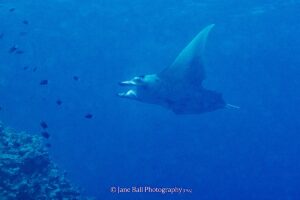
While we were in Fiji there, we took many photos of the mantas, particularly the undersides which are different for each individual. Similar to Happywhale, which is a database of humpback whales identified from photos taken of whale tails, MantaBase maintains a database of photos of the undersides of manta rays. These organizations track the travels of the whales/mantas based on photos of sightings. While in Fiji, we identified a new manta that had not yet been added to the database. Look at the undersides of the mantas in these photos to see the differences.
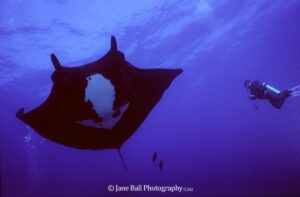
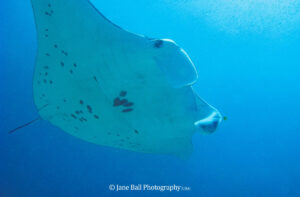
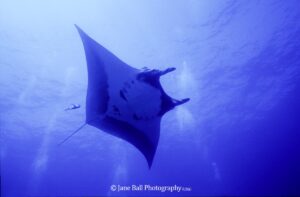
On another trip at a different location, our dive guide told us to look for a manta that liked to come to divers and hover over them. He thought it was because it liked the feel of the bubbles from our exhales. Indeed, the manta came. This made sense to me because I too like the feel of the bubbles and make a point now and then of being over the top of another diver so that I can feel the bubbles break on my face.
Keeping their big brain in mind, here is another story we were told in Fiji. Our guide had heard the story but could not verify. There was a diver who was met by a particular manta regularly in his dives. He felt that the manta recognized him but he did not know how. He wore different colored suits, and the manta still recognized him. Over time, he would change as many things as he could, and every time, the manta recognized him. Finally, he wore a dive mask that was colored such that his eyes could not be seen, and the manta did not recognize him. He had to conclude that the manta was looking him in the eye and seeing him for who he was. To me this shows an extreme amount of intelligence, and I love the story. At the time, I searched the web to find backup for the story, and I finally found a video that told the same story. The video has since disappeared so I cannot confirm the story or share the video, but I choose to believe that it is true. While on my search, I found many references to instances where mantas have recognized individual divers.
I could go on with more details about this extraordinary fish, but instead I urge you to check out this YouTube video. This video educated me in several ways, not the least of which is that mantas can change their skin color and pattern. That was news to me!

